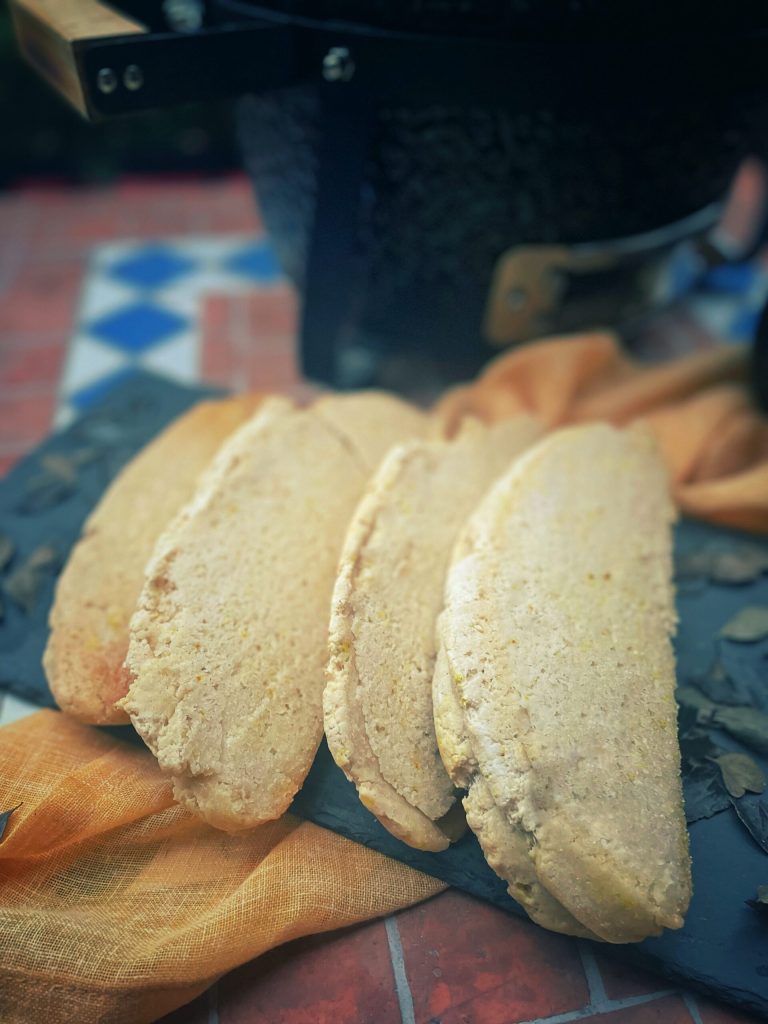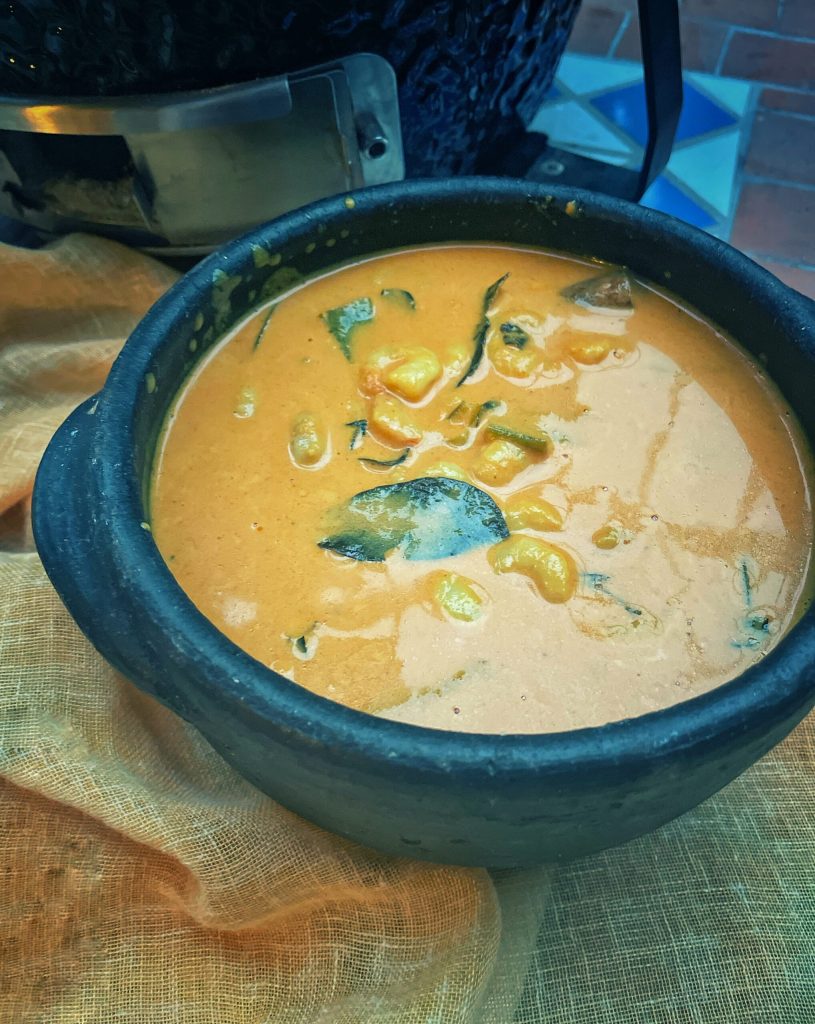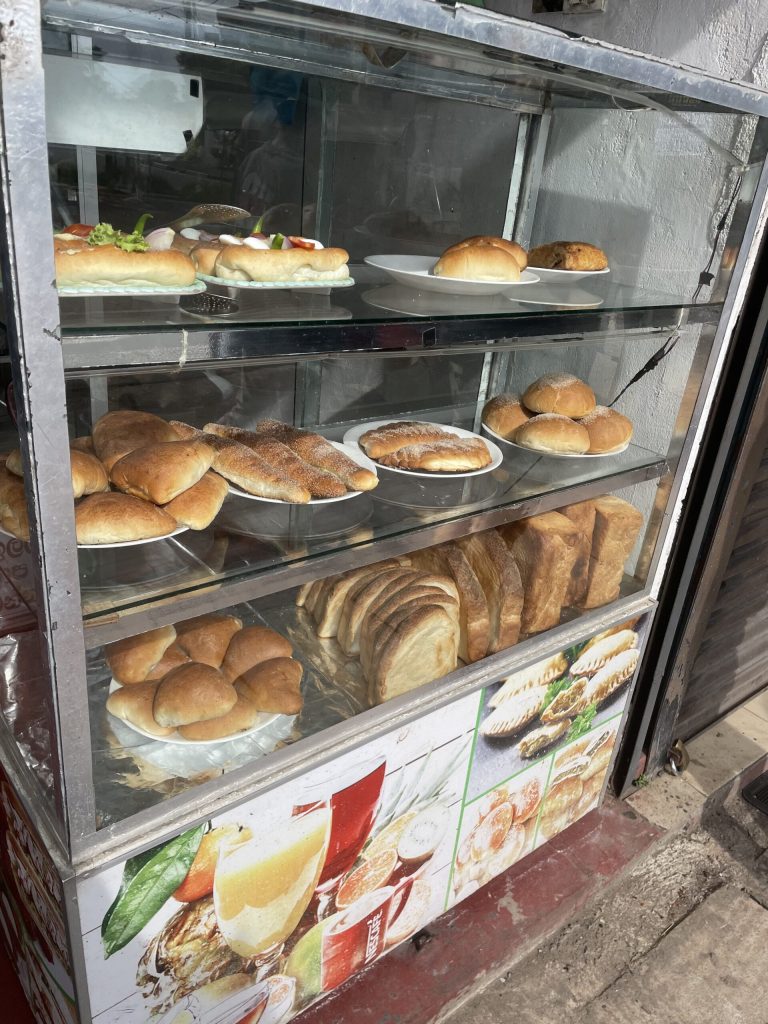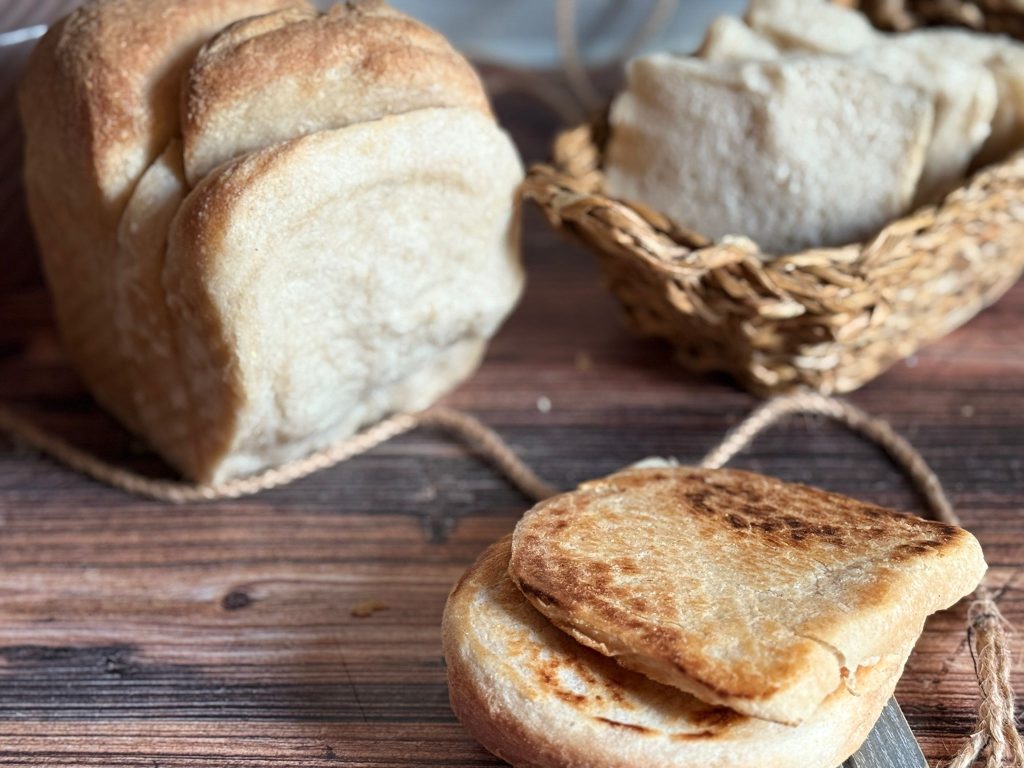The Roast Paan is the most common traditional bread in Sri Lanka, widely found in local bakeries and often sold by the characteristic musical vans called Choon Paan: simple, rustic, with long fermentation, served with curry or chutney, coconut sambol, or simply with butter.
It is a naturally leavened bread, known for its crunchy crust and soft interior.
Unlike pol roti (a flatbread with coconut), Roast Paan is a leavened bread oven-baked, often cut into wedges or slices.
In the traditional preparation of Roast Paan in Sri Lanka, the dough is divided into equal portions, shaped into balls or oval shapes, and then placed side by side in a rectangular pan, often similar to a loaf pan (but wider and shallower).
During baking, the shapes merge to create a “pull-apart” bread (pull-apart), with a well-cooked and crunchy crust and a more compact crumb.
I chose to make it in a gluten-free version, with fresh homemade yeast and on the kamado, as it is perfect for baking bread due to its ability to retain heat and moisture, simulating a wood-fired oven.
And I paired it with a shrimp curry known in Sri Lanka as “Isso curry” (ඉස්සෝ කරි), because “isso” means shrimp.

- Difficulty: Easy
- Cost: Very economical
- Rest time: 8 Hours
- Preparation time: 10 Minutes
- Portions: 4People
- Cooking methods: Other
- Cuisine: Sinhalese
- Seasonality: All seasons
Ingredients
- 2 1/2 cups gluten-free flour mix
- 5.3 oz fresh homemade yeast
- 1.4 oz sugar
- 0.35 oz salt
- 1 1/2 cups water (warm)
- 2 tbsps coconut oil (and for brushing)
Tools
- 1 kamado
- 1 Baking Pan loaf type
- 1 Thermometer
Steps
Dough Preparation:
In a large bowl, mix the gluten-free flour, sugar, and salt.
Add the fresh homemade yeast and warm water gradually, stirring until a smooth and slightly sticky dough forms.
Incorporate the coconut oil and continue mixing until fully integrated.
First Rise:
Cover the dough with a damp cloth and let it rise in a warm place for about 4-6 hours, or until it doubles in volume.
Shaping:
Divide the dough into 6 portions of about 5.6 oz each.
Shape into balls and flatten slightly to form oval shapes.
Place the shapes on top of each other, brushing each with coconut oil.
Second Rise:
Place the dough in the loaf pan, cover with a cloth, and let it rise for another 1-2 hours, until visibly puffed.
Kamado Preparation:
Preheat the kamado to 392°F, if desired, insert a pizza stone.
Ensure the temperature is stable before baking.
Baking:
Transfer the pan (on the pizza stone) into the kamado.
Bake for about 25-30 minutes, or until the surface is golden and crispy, and the internal temperature reaches 203°F.
Let cool for at least 30 minutes before serving, slicing into pieces.
🥥 Variants and Accompaniments
Thati Paan: A thinner and crunchier version of Roast Paan, often served with spicy curries or coconut sambol.
Breudher: A naturally leavened sweet bread, enriched with butter, eggs, sugar, raisins, and nutmeg, traditionally served during Christmas holidays.

FAQ (Questions and Answers)
What is the recipe for the shrimp curry paired with roast paan?
This is a quick and authentic recipe for Sri Lankan shrimp curry.
Total time: 30 minutes
Servings: 4
🧂 Ingredients:
1 lb of raw shrimp, cleaned (with or without head)
2 tablespoons of coconut oil
1 red onion, thinly sliced
3 garlic cloves, minced
1 tablespoon of fresh ginger, grated
1 tablespoon of finely sliced lemongrass (optional)
2 small green chili peppers, sliced
10-15 curry leaves (if available)
1 cinnamon stick (about 2 inches)
2 ripe tomatoes, diced
1 tablespoon of Sri Lankan curry powder (preferably untoasted)
1/2 teaspoon of turmeric powder
1 teaspoon of chili powder (adjust to taste)
1 cup of coconut milk
Salt to taste.
👩🍳 Preparation:
Aromatic saute: Heat the coconut oil in a large skillet over medium heat. Add the onion, garlic, ginger, lemongrass, green chilies, curry leaves, and cinnamon stick. Saute until the onion becomes translucent and aromatic.
Spices and tomatoes: Stir in the diced tomatoes and cook until softened. Add the curry powder, turmeric, and chili powder. Mix well to toast the spices and develop flavors.
Coconut milk: Pour the coconut milk into the skillet, stir, and bring to a gentle boil. Reduce heat and let simmer for about 5 minutes, allowing the flavors to blend.
Shrimp cooking: Add the cleaned shrimp to the sauce and cook for 3-5 minutes, until they turn pink and opaque. Avoid overcooking to keep them tender.
Final adjustment: Taste and adjust salt according to preference.
What are the traditional oven cooking times for Roast Paan?
Oven at 392°F, static, bake for 25 minutes.
What is the difference between roast paan and thai paan?
The main difference between Sri Lankan Roast Paan and Thai Paan (or Thai Bread) lies in:
Roast Paan: Sri Lankan rustic bread, introduced during the British colonial period. It is considered a daily bread, sold on the street, often accompanied by curry or butter and tea.
Thai Paan (ขนมปังไทย): Refers to various types, often sweeter, softer, and enriched (filled with cream, coconut, or salty toppings). Derived from European influences (French, Portuguese) but adapted to local taste, very popular as snacks or street food.
Roast Paan:
Wheat flour
Coconut oil
Water, sugar, salt
Yeast
No egg or milk (basic version)
Thai Paan:
More refined flour
Eggs, condensed or evaporated milk
Butter or margarine
More sugar
Sometimes cream or sweet fillings
Roast Paan: Thick and hard crust, compact crumb, simple shape (like a rectangular loaf).
Thai Paan: Soft and fluffy crumb, shiny surface, often spread with butter/sugar or filled.
Roast Paan: Eaten with savory dishes, curry, or simply with tea.
Thai Paan: Sweet snack or breakfast.
In the photo, a Sri Lankan stall encountered during my trip in October 2025 showing various types of bread, including Roast and Thai Paan.
What is the traditional (gluten) recipe for roast paan?
You can find the traditional recipe with fresh homemade yeast on my colleague Sara’s blog “SaraBuonoDavvero” with whom I have the pleasure of collaborating, at this link and the photo below.


